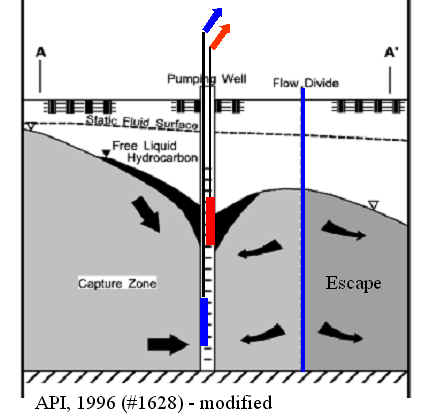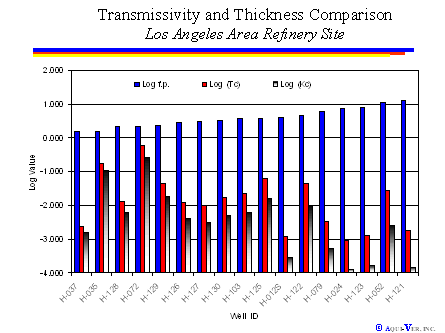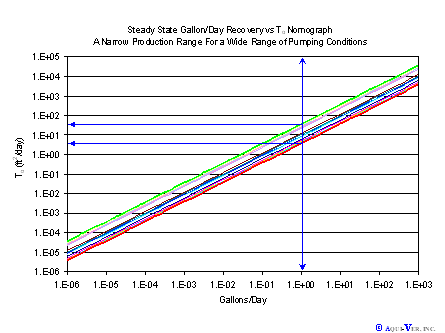Pump & treat is one of the oldest remediation
techniques. Some older refineries installed product collection sumps
as far back as the early 1900s. This cleanup method is still quite
prevalent today, but one really must question why?
P&T is often used under the perception that it is an
effective free product removal technique. In reality for the
majority of cases, it is not at
all an effective remediation technique. Its ability to remediate
aquifers has been called into question by top scientists since the late
1980s. Like in oil reservoirs, a significant fraction of oil is
unrecoverable using hydraulics. AVI's advanced analysis work has
shown at many sites that it is unusual to be able to recover more than 10%
of the mass in-place. The unrecoverable 90% presents the same
risk/liability context as was present before recovery (in the majority of
cases).
When properly designed, P&T is effective at one
thing only: containment. But, because the majority of legacy LNAPL
plumes are stable (assuming years in the ground & no new inputs),
containment is already present naturally.
AVI has developed a number of techniques to:
a) Estimate volume in-place; b) Estimate recoverable fractions; c)
Estimate costs over time; d) Estimate the net benefit of P&T; e)
and a variety of other inter-related technical analyses. All of
these tools lead to highly refined optimization and a reduction in
non-beneficial expenditures.



